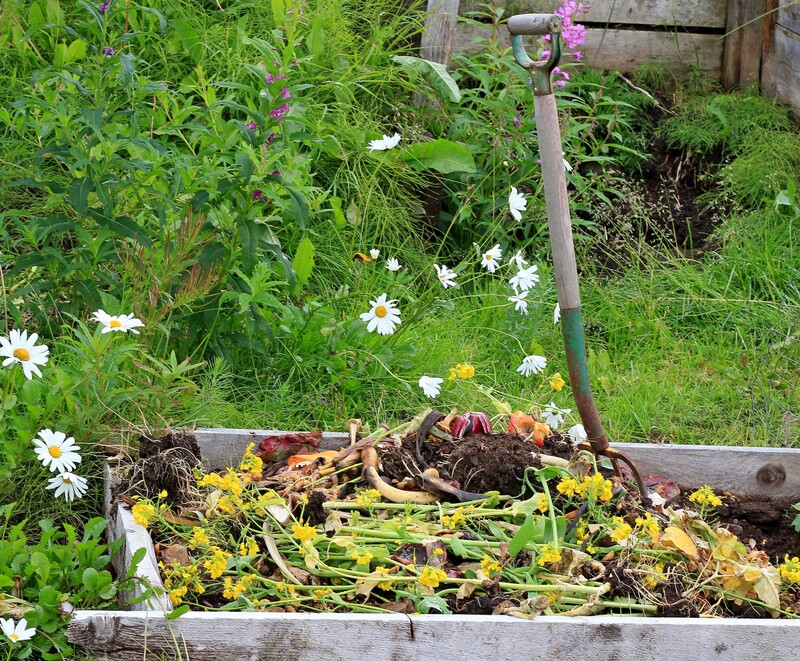Examining Hazardous Waste: From Ordinary to Dangerous
Hazardous waste is a critical issue in today's world, posing significant risks to both environmental and human health. While most of us picture hazardous waste as barrels of toxic sludge or radioactive material, the reality is that much of it originates from everyday items we use in our homes, schools, and workplaces. In this detailed guide, we are examining hazardous waste--from the most ordinary household disposals to the downright dangerous materials found in industrial sectors. This article will help you understand the types, examples, dangers, regulations, and sustainable management practices relevant to hazardous waste.

What Is Hazardous Waste?
Hazardous waste refers to any discarded material, whether in solid, liquid, or gaseous form, that can cause significant harm to humans or the environment. The defining characteristics of these wastes are their toxicity, persistence, reactivity, and potential to adversely affect living organisms or ecosystems.
- Toxicity: Ability to poison living beings, even at low concentrations.
- Reactivity: Can undergo violent chemical reactions, sometimes with air or water.
- Ignitability: Can easily catch fire.
- Corrosiveness: Can corrode metals or destroy living tissue.
Hazardous wastes originate from a variety of sources, making it crucial for us to recognize and manage them appropriately.
Distinguishing Ordinary and Dangerous Waste
Not all waste is created equal. While ordinary waste refers to materials like food scraps, paper, or packaging, dangerous hazardous waste often contains chemicals or compounds that are regulated for disposal. The transition from ordinary to hazardous often depends on:
- The presence of specific chemicals or substances
- The potential for environmental or human health impacts
- How the waste is handled, stored, or disposed
Common Types of Hazardous Waste
1. Household Hazardous Waste (HHW)
Many products used daily fall under the hazardous waste umbrella, even if they don't seem dangerous at first glance. Examples include:
- Batteries (especially lithium, nickel-cadmium, and lead-acid)
- Paints, thinners, and varnishes
- Certain cleaning agents and disinfectants
- Unused or expired pharmaceuticals
- Pesticides and herbicides
- Electronics (containing lead, mercury, or other hazardous substances)
Improper disposal of these items can cause groundwater contamination, pose fire hazards, or impact air quality.
2. Industrial Hazardous Waste
Industries are significant producers of dangerous hazardous waste. Typical industrial sources include:
- Chemical manufacturing plants
- Textile and dye production units
- Petroleum refining and fuel production
- Metal processing and electroplating
- Automotive and aerospace industries
These sources often generate complex waste streams containing persistent organic pollutants (POPs), heavy metals, solvents, acids, and bases.
3. Medical and Biological Waste
The healthcare sector produces dangerous waste streams, which, if mishandled, could spread infection or harm the environment. Common examples:
- Used syringes and needles
- Pathological waste (tissues, organs)
- Pharmaceutical discards
- Chemically contaminated equipment
4. Electronic Waste (E-Waste)
The exponential growth of consumer electronics has resulted in a surge of e-waste--a major component of hazardous waste. E-waste can contain lead, mercury, cadmium, and flame retardants, which are hazardous to both ecosystems and human health.
Why Is Hazardous Waste Dangerous?
Examining hazardous waste is vital because its threats extend far and wide. Here's why these materials demand our caution:
- Environmental Impact: Hazardous chemicals can leach into soil and water bodies, causing long-term pollution and loss of biodiversity.
- Human Health Risks: Even trace amounts of certain substances can cause cancer, developmental disorders, neurological problems, and respiratory diseases.
- Economic Costs: Cleanup of hazardous waste sites and the associated medical care often cost billions of dollars each year.
- Accident Hazards: Flammable, corrosive, or reactive wastes can cause fires, explosions, or chemical burns.
Examining the Journey: How Ordinary Waste Becomes Dangerous
Step 1: Use and Disposal
It's not uncommon for waste to start as an ordinary substance. Take household cleaners or paints, for instance. Used in moderation, they may seem harmless. Problems arise when:
- They are mixed with other incompatible substances
- Expired products become chemically unstable
- Improper disposal allows substances to enter the environment
Step 2: Accumulation and Storage
Hazardous waste becomes more dangerous as it accumulates or is stored improperly. Old electronics stored in basements may slowly release toxins, while batteries leak acids that can cause fires or corrode surrounding materials.
Step 3: Environmental Exposure
Over time, hazardous materials leach into soil, seep into groundwater, or become airborne as dust and gases. This is why examining hazardous waste management practices is so vital for urban areas and rural communities alike.
How Is Hazardous Waste Classified?
Regulatory bodies such as the Environmental Protection Agency (EPA) and similar international organizations classify hazardous waste based on its properties--a process critical for determining how it must be handled or disposed.
- Listed waste: Found on specific regulatory lists (like the EPA's F-list, K-list, P-list, and U-list) due to known hazards.
- Characteristic waste: Identified by ignitability, corrosivity, reactivity, or toxicity.
- Universal waste: Includes batteries, pesticides, bulbs (lamps), and some electronics.
- Acute hazardous waste: Extremely dangerous even in small amounts (e.g., some pesticides and pharmaceuticals).
Regulatory Definitions and Thresholds
The definition of hazardous waste and the thresholds for regulation can differ by country or state. However, they commonly require:
- Proper labeling and storage of hazardous materials
- Detailed tracking from their point of generation to disposal ("cradle to grave" system)
- Strict documentation and reporting requirements
- Trained personnel for handling and transportation
Safe Handling and Disposal Methods
Proper management is non-negotiable when dealing with hazardous waste. Below are key best practices:
- Source Reduction: The most effective method, aiming to decrease the volume or toxicity of waste produced by using less hazardous materials or improving processes.
- Recycling and Recovery: Some hazardous materials, like certain solvents, metals, or batteries, can be recycled, reducing the need for landfill disposal.
- Secure Landfills: Specially engineered landfills designed to contain hazardous waste and prevent leaching into soil or water.
- Incineration: High-temperature incinerators can destroy some types of hazardous waste, especially organic compounds, but must be carefully regulated to avoid releasing harmful substances into the air.
- Chemical Treatment: Involves neutralizing or converting hazardous compounds into less toxic forms before disposal.
- Bioremediation: Employing bacteria or plants to degrade or concentrate toxic substances, a promising method for contaminated soil and water.
Hazardous Waste Collection Programs
Many communities offer household hazardous waste collection days--special events where citizens can safely dispose of items like paint, batteries, and electronics.
The Role of Personal Responsibility
Education and awareness are key in minimizing hazardous waste. Consumers can:
- Choose low-toxicity alternatives where possible
- Purchase only what is needed to avoid excessive disposal
- Properly research local regulations and disposal options
- Safely store and transport hazardous materials
The Impact of Hazardous Waste on Communities
Across the world, thousands of communities are affected by the improper disposal or legacy contamination of hazardous waste. The infamous Love Canal disaster in the United States, for example, highlighted the catastrophic impact on both people and property when dangerous wastes are not properly managed.
- Health Effects: Clusters of cancers, respiratory illness, and birth defects have been linked to hazardous waste exposure.
- Environmental Justice: Disproportionate impacts are seen in poorer or marginalized communities.
- Long-Term Issues: Even after cleanup, the stigma and ecological effects can persist for decades.
Sustainable Solutions and the Future of Hazardous Waste Management
As we continue examining hazardous waste challenges, innovative approaches and policies are shaping a safer, more sustainable future:
- Green Chemistry: Designing products and processes that minimize or eliminate hazardous substances.
- Circular Economy Models: Encouraging reuse and material recovery to reduce waste generation.
- Product Stewardship: Holding manufacturers responsible for the lifecycle of their products, including take-back and recycling schemes.
- Policy and Enforcement: Strengthening regulations and global agreements, like the Basel Convention, to control hazardous waste movement.
- Community Engagement: Building local capacity and raising awareness to empower individuals and organizations.
The Role of Technology in Hazardous Waste Management
Advanced tracking, real-time monitoring, and data analytics are revolutionizing our ability to identify, monitor, and remediate dangerous waste sites more effectively than ever.

Frequently Asked Questions About Hazardous Waste
-
What makes waste hazardous?
Waste is considered hazardous if it exhibits dangerous properties (toxicity, ignitability, corrosivity, reactivity) or is defined as such by regulatory lists. -
Can ordinary household items be hazardous?
Yes--many products like batteries, cleaners, and electronics contain hazardous components and should not be thrown in the regular trash. -
How can I safely dispose of hazardous waste?
Use designated community collection sites, follow label instructions, and never mix incompatible wastes. -
Are there alternatives to hazardous materials?
Many safer alternatives exist, especially in cleaning products, pesticides, and paints. Always look for eco-friendly or non-toxic options. -
What is the government's role?
Governments set standards for the safe handling, transportation, storage, and disposal of hazardous waste and often fund cleanup efforts for contaminated locations.
Conclusion: Towards a Safer World
By examining hazardous waste, from ordinary to dangerous, we are better equipped to recognize it, understand its risks, and adopt responsible management strategies. Whether at home, in the workplace, or through policy advocacy, every individual can play a role in minimizing dangerous waste and protecting our health and environment for generations to come. Let's make informed choices today for a safer, cleaner world tomorrow.